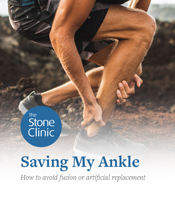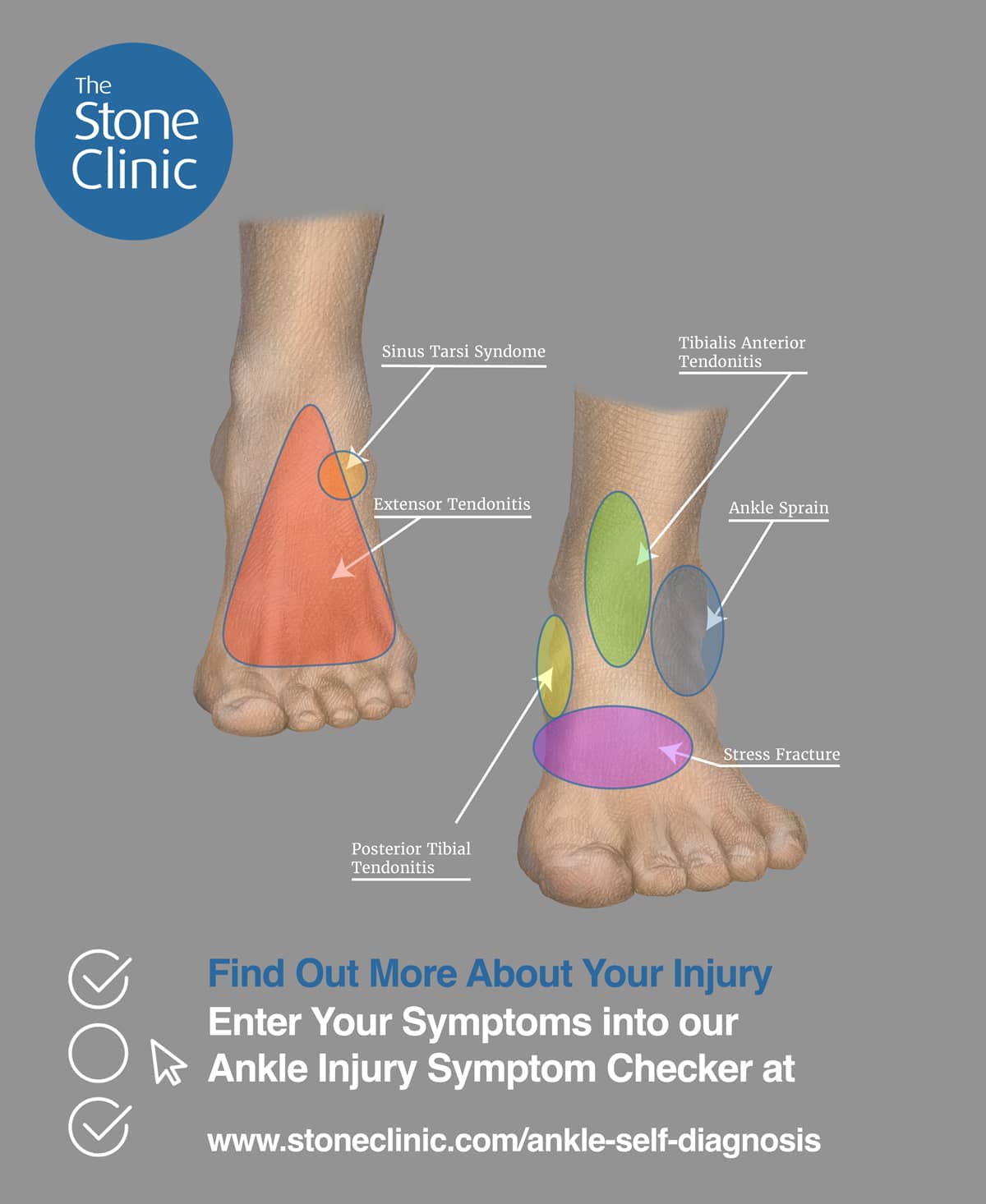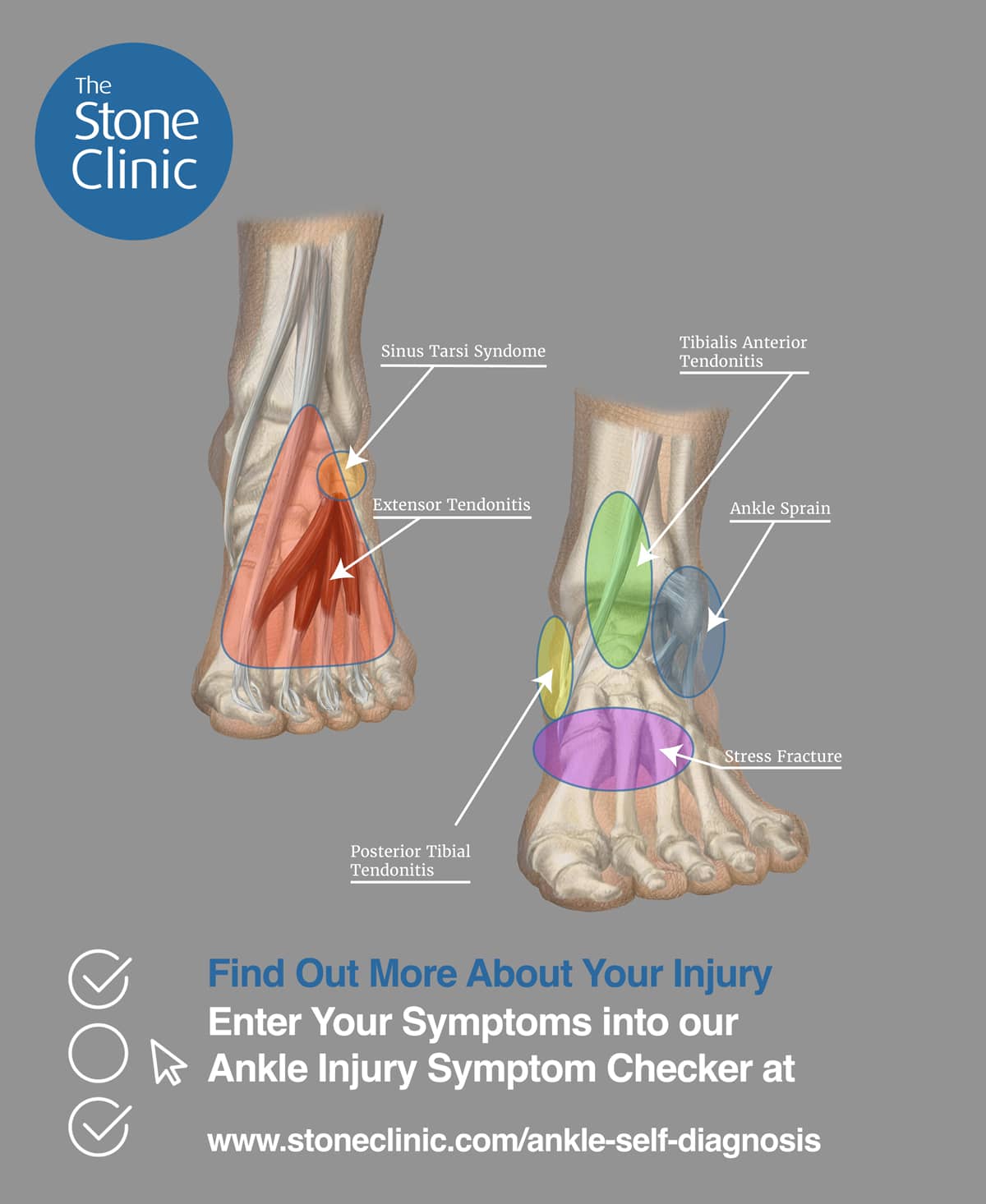Ankle Pain Symptom Checker | Find Causes of Your Ankle Pain
Experiencing ankle pain but unsure what’s causing it? Our Ankle Pain Symptom Checker helps you identify potential causes based on your symptoms.
Whether you're struggling with swelling, stiffness, instability, or sharp pain, this tool provides expert-backed insights to guide your next steps. Use our interactive checker below to pinpoint possible conditions and explore the most advanced therapies to treat your injury. It won’t replace a real doctor or provide a definitive diagnosis, but it can help you better understand your symptoms.
How to Use Our Ankle Pain Symptom Checker
Select the symptoms you’re experiencing and press the "Submit Symptoms" button. Based on your responses, our tool lists conditions matching your symptoms. Click on the listed conditions to learn more about the potential injury and its treatment solutions.
1
Select your injury body area & symptom(s) below
2
Select from list of possible conditions
Disclaimer: This tool is for information purposes only and provides only an approximate guide as to what may be wrong with your joints. It should not be used instead of seeking professional medical advice or diagnosis.
Live in the San Francisco Bay Area?
Book an In-Person Appointment with our Online Scheduler
Outside of the Bay Area?
If, like many of our patients, you don't live in the Bay Area, we offer a complimentary phone consultation service.
Enter your email to receive your guide

Why Does My Ankle Hurt? Common Causes of Ankle Pain
If you are experiencing ankle pain or instability from a recent injury, ankle pain when walking, ankle pain after running, or ankle pain without injury, etc., it may be a minor concern or indicator of a serious issue.
Ankle issues are usually caused by traumatic injuries, repetitive motion injuries, long-term wear & tear, or tissue disorders. Below are injuries that are common causes of ankle pain, but it is best to enter your symptoms into our Ankle Pain Symptom Checker to gain a better understanding of your injury. For more guidance, read orthopaedic surgeon Kevin R. Stone MD's blog on ankle pain and when to consider surgery.
Common Ankle Injuries
- Achilles tendon injury: the Achilles is a dense band of tissue that passes behind the ankle joint. Injuries to it vary from mild to severe: tendonitis, a partial rupture, or complete rupture. A complete rupture is debilitating, can cause immense pain, and requires immediate medical/surgical intervention to avoid permanent tissue damage. Here's why we take a minimally invasive approach to Achilles tendon surgery: Don’t Open the Achilles.
- Ankle fracture: a foot twist can sometimes cause bones to break. Even minor displacements can cause a significant increase in the abnormal forces across the joint, eventually leading to arthritis. Treatment is based on the fracture pattern and the degree of displacement. Accuracy in diagnosis is key to determining the best course of treatment.
- Ankle arthritis/cartilage injury: is characterized by cartilage damage that, over time, causes cartilage lesions on the weight-bearing surface of the ankle joint resulting in symptomatic pain, inflammation, swelling, and stiffness. These symptoms may be experienced years after an ankle injury occurred.
- Ankle sprain: sprains are very common but usually minor and heal quickly. There are three grades of sprains:
- Grade I: stretching of the ankle ligaments without tearing of the collagen fibers.
- Grade II: partial tearing of the ankle’s collagen fibers without a complete rupture.
- Grade III: complete rupture of the ankle’s collagen fibers.
- Plantaris rupture: the Plantaris muscle is a fine rope-like tendon running next to the larger Achilles Tendon. A tear or rupture of this muscle is commonly called “Tennis Leg” and is usually the result of a sudden muscular action such as reaching out for a tennis shot. Patients often report hearing a pop in the back of their calf at the time of injury accompanied by pain and swelling most commonly at the junction of the calf muscle and the Achilles tendon, the location of the rupture.
Ankle Injury Diagnosis Chart
The ankle injury charts below provide an approximate guide as to which part of the anatomy may be injured based on the location of your ankle/foot pain. They are for informational purposes only and should not be used instead of seeking professional medical advice or diagnosis.




What to Do After Using the Symptom Checker
If your symptoms indicate a potential injury, don't wait for your injury to progress. Take the next step and begin your recovery journey now with Dr. Stone:
- Book an appointment online to see us in person, or you may call The Stone Clinic at +1 (415) 563-3110.
- Schedule a complimentary virtual consultation. If you don't live in the San Francisco Bay Area, we offer a complimentary virtual pre-appointment consultation service. Please note this pre-appointment service is only available for patients 100 miles outside the San Francisco Bay Area (and does not apply to any in-office services).
Ankle Replacement or Ankle Fusion? Our Answer: Neither.
Fusion and artificial replacement aren’t your only options. Dr. Stone's BioAnkle® program is an innovative biologic approach designed to repair and regenerate your ankle—keeping you moving naturally and pain-free, without metal or limitations.

Dr. Kevin R. Stone, a world-renowned orthopaedic surgeon, leads The Stone Clinic and chairs the Stone Research Foundation. Trained at Harvard and Stanford, he pioneers biologic solutions to treat and prevent ankle arthritis, ligament instability, and tendon damage.
For over 30 years, Dr. Stone has restored ankle health using advanced regenerative techniques that preserve motion and avoid ankle fusions or replacements. His BioAnkle® program combines cartilage-regenerating therapies, bioactive injections, and minimally invasive techniques to biologically rebuild unstable and arthritic ankle joints.
Why This Matters: This symptom checker tool was developed using Dr. Stone’s expertise to provide patients with the most advanced diagnostic insights and treatment pathways—helping you make informed decisions about your ankle health.









